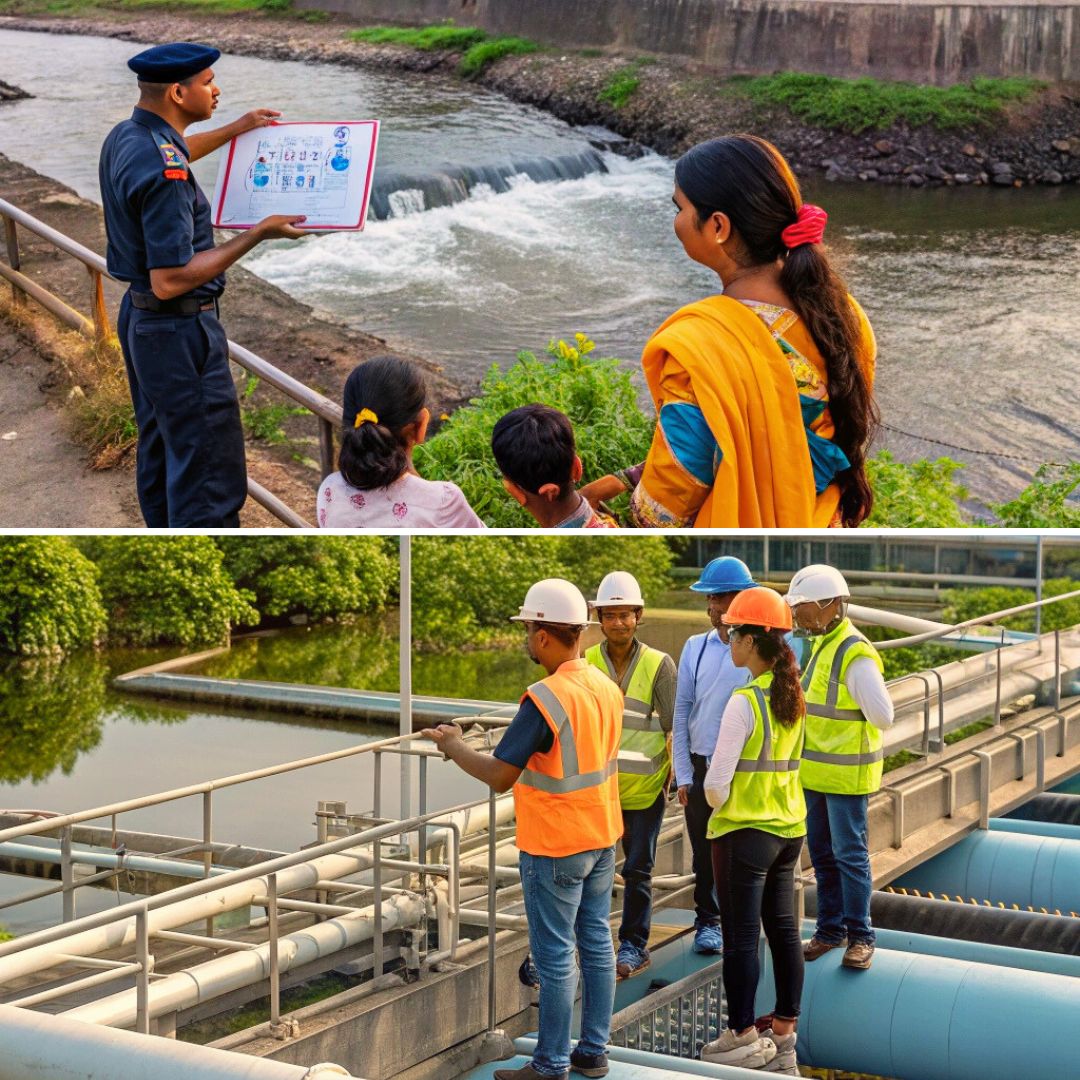Nagpur has emerged as a national trailblazer by earning up to ₹300 crore annually through the treatment and industrial reuse of sewage water, while also leading in biofuel production from organic waste.
The city’s robust sewage management system, involving multiple large-scale treatment plants, not only generates revenue but also conserves freshwater, reduces river pollution, and sets a model for integrated urban waste management.
Despite some land acquisition hurdles for new projects, officials and stakeholders continue to push for expansion and replication of Nagpur’s model across India, with recent government-backed initiatives aiming to upgrade sewage infrastructure in the wider Nagpur region.
A City Where Waste Powers Progress
Nagpur generates approximately 520–550 million litres per day (MLD) of sewage, of which the Nagpur Municipal Corporation (NMC) treats about 330 MLD at its main plants, including the flagship Bhandewadi facility (130 MLD) and a newer 200 MLD plant developed under a public-private partnership.
The treated water is supplied to major power plants such as Koradi and Khaparkheda, replacing the use of precious freshwater and saving up to 190 MLD of fresh water daily.
The city’s innovative approach, which includes a tripartite agreement between NMC, Maharashtra State Power Generation Company (MAHAGENCO), and private operators, has been lauded by Union Minister Nitin Gadkari, who stated, “In Nagpur, the municipal body is earning ₹300 crore annually by treating sewage and selling it to industries in the nearby areas.”
The NMC also produces bio-CNG from organic waste, fuelling municipal vehicles and further reducing environmental impact.
Expanding the Vision: Regional and Technical Challenges
Nagpur’s success is now influencing the broader region, with 15 surrounding towns set to receive modern Sewage Treatment Plants (STPs) under the Swachh Bharat Mission (Urban) 2.0, aiming for a total regional treatment capacity of 1,654 MLD.
This integrated approach will relieve Nagpur’s rivers Nag and Pili from excess sewage inflow, benefiting both the city and its neighbours.
However, expansion faces obstacles: two major new STP projects in central Nagpur have been delayed due to land acquisition issues, with institutions like VNIT and PDKV hesitant to allocate land for the proposed 12 MLD and 6-acre plants, respectively.
Despite these setbacks, officials remain optimistic, with site surveys completed and joint inspections underway. The NMC continues to plan further capacity augmentation, including talks to increase the 200 MLD plant’s output by another 100 MLD.
A Model for Urban India’s Future
Nagpur’s journey from polluted rivers to a circular economy leader was driven by urgent environmental needs and judicial intervention.
Years ago, untreated sewage had turned the Nag, Kanhan, and Wainganga rivers into virtual drains, prompting the High Court to order capacity expansion at Bhandewadi and the construction of new STPs.
The city’s adoption of advanced treatment technologies such as sequencing batch reactors with tertiary treatment ensures water quality meets strict standards, with treated water reused for industrial cooling and construction.
The state government’s recent approval of new STPs in smaller urban local bodies signals a shift towards integrated regional planning, where even smaller towns contribute to cleaner water bodies and resource recovery.
The Logical Indian’s Perspective
Nagpur’s achievements show how vision, collaboration, and investment in sustainable infrastructure can transform urban challenges into opportunities for growth and environmental stewardship. The city’s experience proves that waste is not a burden but a resource one that can fund public services, protect rivers, and fuel the local economy.
As India’s cities grapple with mounting waste and water crises, should more urban centres adopt Nagpur’s integrated, circular approach? What roles can citizens, local bodies, and private partners play in scaling these solutions nationwide?












